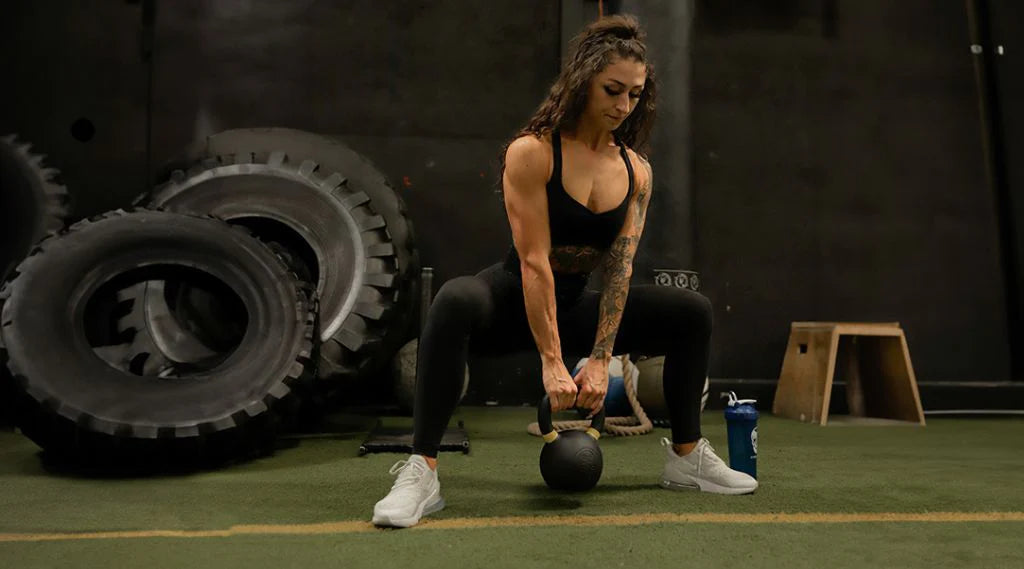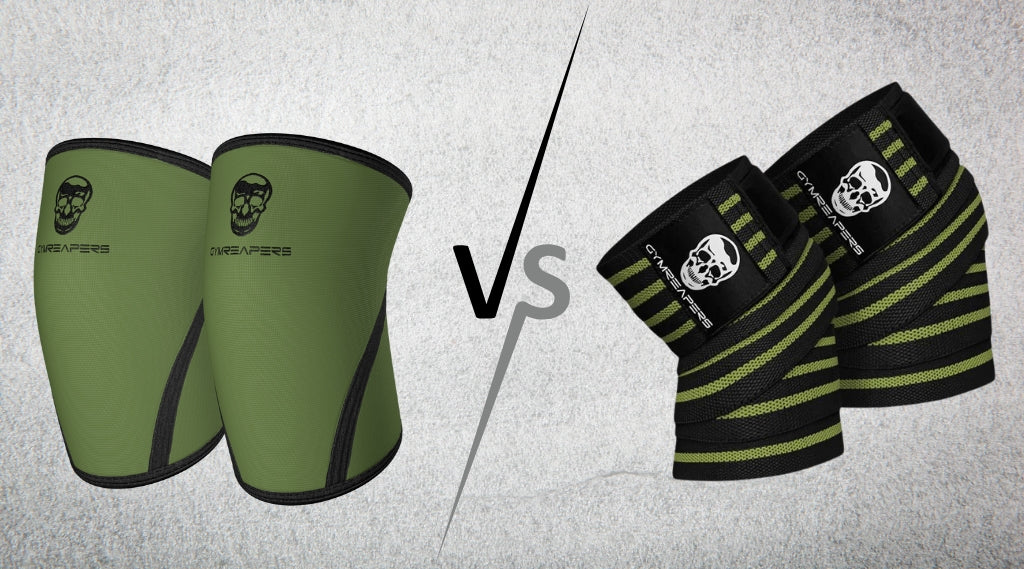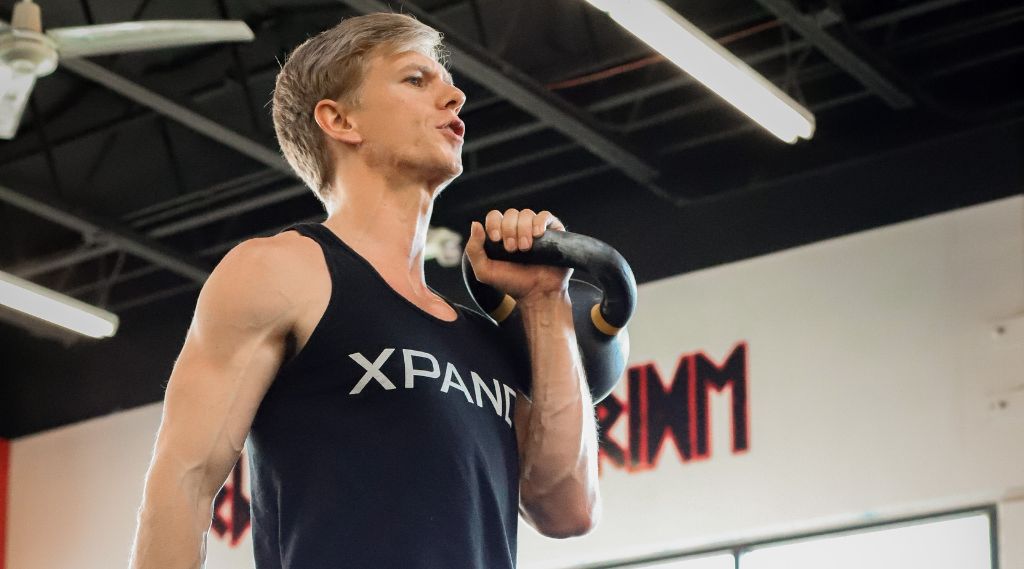Kettlebell sumo deadlifts are my favorite exercise to program to strengthen and build the hips and are a great option for promoting hip health as well.
So, what is a sumo deadlift? The sumo deadlift is an incredible total body exercise that requires you to pick up a kettlebell from the ground by hinging at the hips and using your back and legs to stand up with the weight.
In this article, I will discuss the benefits of performing kettlebell sumo deadlifts, teach you how to perform them correctly, and highlight 4 common mistakes to avoid.
Key Takeaways
Kettlebell Sumo Deadlift: Anatomy Overview

The muscles that are involved in the kettlebell sumo deadlift are:
- Glutes (Gluteus minimus and maximus). The glutes are responsible for external rotation and extension at the hip joints. During the sumo deadlift, these actions maintain the hip position and are involved with standing the weight up.
- Quads (Rectus femoris, vastus medialis, vastus lateralis, and vastus intermedius). Quads are responsible for knee extension and hip flexion. This is most involved during the starting position of the deadlift and the pushing of the weight off the floor.
- Hamstrings (Semitendonsis, semimembranosus, and biceps femoris). The hamstring muscles are responsible for knee flexion and hip extension. Strong hamstrings are associated with locking out the sumo deadlift and stabilizing the load throughout the movement.
Benefits Of Sumo Deadlifts With A Kettlebell

The benefits of the sumo deadlift include:
Kettlebell sumo deadlifts can improve one’s ability to maintain proper posture in these compromised positions.
Additionally, stronger muscles can carry over to increased performance in movements such as barbell squats, deadlifts, lunges, and various other lower extremity movements.
This allows you to keep up with your workout regime when you’re on the road or working with limited equipment.
How To Do Kettlebell Sumo Deadlifts
Here’s how to do kettlebell sumo deadlifts:
- Have your feet in a wider-than-shoulder-width stance with your toes pointed outwards.
- A wider stance will prioritize your glutes and hamstrings, whereas a narrower stance will target your quads and glutes.
- Set up with a kettlebell in between your feet.
- Build tension in the upper back by driving the traps down (keeping your shoulders away from your ears) and squeezing the armpits to activate the lats.
- Get into position by hinging at the hips and bending your knees to grab the kettlebell. You should feel tension in your glutes and hamstrings.
- Grip the kettlebell with both of your hands and use the weight of the kettlebell to wedge yourself into position.
- Maintain an upright posture with a proud chest throughout the entirety of the rep.
- Forcefully stand up with the kettlebell while maintaining positioning and stiffness in the upper torso.
4 Common Mistakes With Kettlebell Sumo Deadlifts & How To Fix Them
To make the most of your kettlebell sumo deadlift, avoid the following mistakes:
Mistake #1: Kettlebell Is Too Far Forward
When the kettlebell is too far forward it places excessive stress on the lower back, and reduces the amount of weight that you can lift.
How To Fix It
To ensure the kettlebell stays close to your body, start with the kettlebell in line with your midfoot and keep your lats tight to keep the kettlebell close. This will reduce your risk of injury and allow you to lift more weight.
Mistake #2: Excessive Back Rounding
It is extremely common for lifters to round their back during kettlebell sumo deadlifts if they have movement restrictions or are unaware that their back is rounding.
Rounding the back under load places excessive stress on the spine and stabilizing muscles, which can lead to injury.
How To Fix It
There are a few ways to prevent back rounding with the kettlebell sumo deadlift:
- Keep Your Chest Proud. Maintaining an upright posture by puffing your chest can help reduce rounding of the upper and lower back engaging the back muscles.
- Focus On Your Set-Up. Rather than bending down to pick up the weight without thought, try initiating the setup by pushing the hips back first and then bending at the knees to grab the kettlebell.
- Breathe and Brace. Bracing during a sumo deadlift involves filling the abdomen with a lot of pressure by taking a deep breath in and holding it as you pull the kettlebell off the floor.
This intra-abdominal pressure helps to stiffen your torso and protect the entire back from rounding, which subsequently prevents potential injuries from occurring.
Mistake #3: Squatting The Weight
Excessive knee bending (squatting rather than hinging) can be problematic for multiple reasons:
- Changes Your Body Position. Excessive knee bending in relation to the weight can lead to inefficient mechanics during a sumo kettlebell deadlift.
- Emphasizes The Quads Rather Than The Glutes and Hamstrings. The sumo deadlift is meant to be an exercise for the posterior chain, which is generally underdeveloped and weak for the average person. Excessive knee bending prevents you from recruiting the posterior chain as intended.
- Places More Stress On The Knees. If you’re squatting the weight up, you’re placing more stress on the knees which can become a problem if you’re already including squats in your workout routine because it may be more stress than your body can recover from.
How To Fix It
To fix excessive knee bend during kettlebell sumo deadlifts, you will need to maintain a perpendicular shin angle to the floor in the start position and focus on hinging at the hips rather than squatting to set the kettlebell back on the ground.
Mistake #4: Letting The Chest Cave
Losing tension in the upper back and glutes can lead to the chest collapsing during the kettlebell deadlift. If the chest is caving before lifting, or during, then you will limit how heavy you can lift and place your body in a compromised position.
How To Fix It
To fix a caving chest, it is better to begin with a more upright torso. In this way, your starting position will be improved, subsequently preventing a caving chest.
Best Kettlebells For Sumo Deadlifts
The Gymreapers Kettlebells were my favorite option for sumo kettlebell deadlifts because these kettlebells are made from cast iron, which makes them extremely durable. Gymreapers kettlebells are currently sold out.

The range of loading gives you access to build an arsenal of intensities to load your sumo deadlift.
The flat base promotes stability at the bottom of the deadlift, allowing you to focus on lifting rather than the kettlebell wobbling around at the bottom. The compact design allows you to either take your weight on the go or load up your home gym with a range of kettlebells.
Furthermore, Gymreapers kettlebells allow you to effectively perform heavy or light sumo deadlifts for many repetitions. These kettlebells are extremely durable in the sense that you don’t have to worry about damaging them when you’re throwing them around during harder sets.













Leave a comment
All comments are moderated before being published.
This site is protected by hCaptcha and the hCaptcha Privacy Policy and Terms of Service apply.